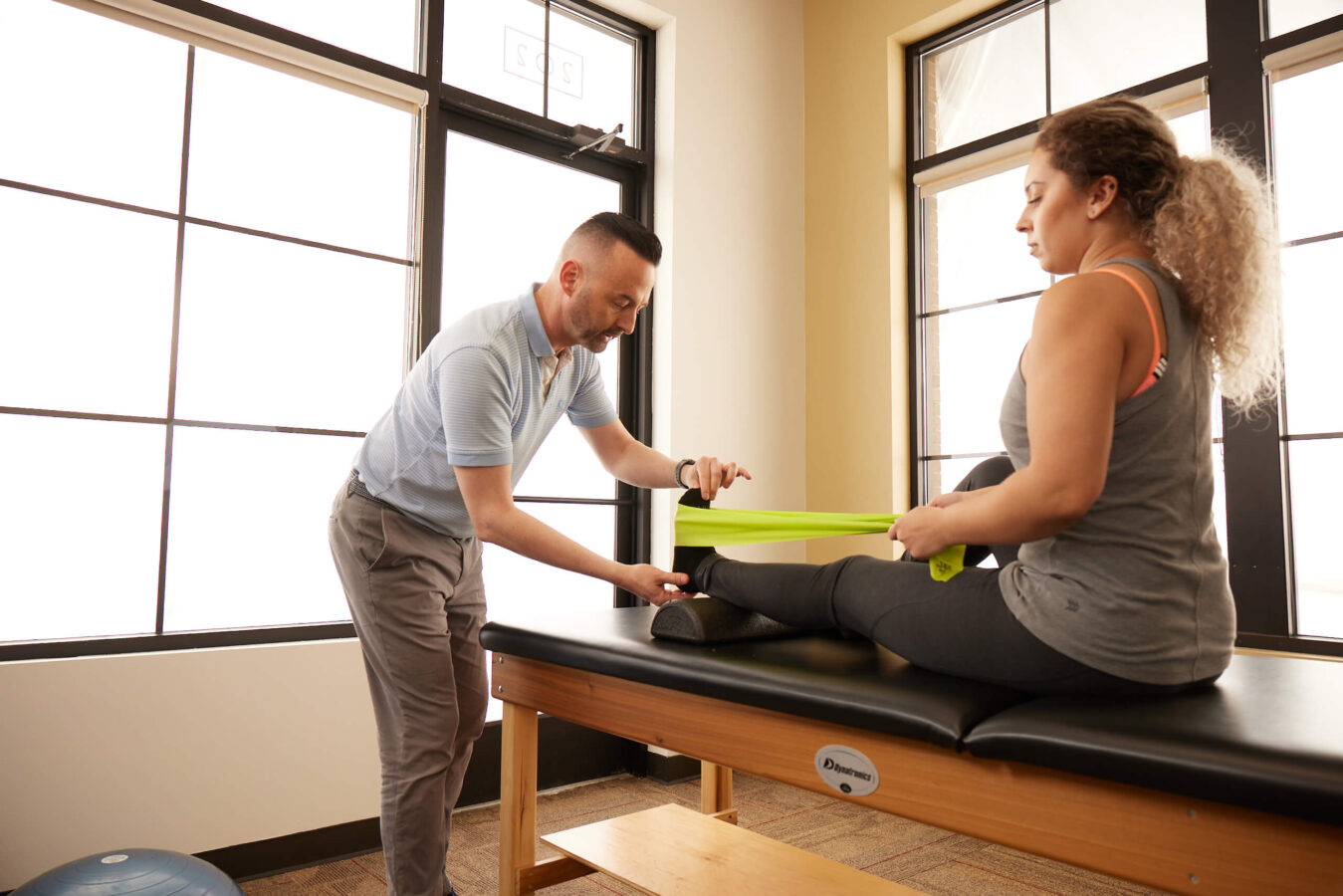
Medically reviewed by Misty Seidenburg
One in five U.S. adults have chronic pain. This equates to more than 51 million people living with pain that affects their daily activities and their overall quality of life. Physical therapy is one treatment that addresses chronic pain to help patients achieve long-term relief and improved function and mobility.
Keep reading to find out how to manage chronic pain with physical therapy.
The potential for pain originates in the receptor cells located in and around our skin and organs. These cells contain messengers called nociceptors. When we are injured or ill, these cells send messages through nerves to the spinal cord up to the brain.
If the brain decides there is a threat to the body, it will convey pain signals to the body. Pain is our body’s way of telling us that it thinks something is wrong.
There are two types of pain. Acute pain is sudden and temporary, typically caused by something obvious and specific like a cut or broken bone. Acute pain goes away once the body has healed from whatever is causing pain, generally within 12 weeks.
Chronic pain is pain lasting at least three months or more, even up to several years. It can remain even after the body has recovered from an illness or injury. Chronic pain is often associated with systemic conditions like arthritis or fibromyalgia.
It can also develop without tissue damage due to illness or injury. Even in the absence of injury, the brain can still perceive a ‘threat’ and produce the sensation of pain. Chronic pain can feel like burning, stinging, throbbing, shooting, stabbing, or aching that comes and goes intermittently, or seems to be ever-present.
Chronic pain is often unpredictable and comes and goes without obvious patterns or triggers. This is a normal occurrence in this type of persistent symptom. As challenging as it may be, it is important to identify the underlying causes of chronic pain and seek the appropriate treatment.
According to the Centers for Disease Control and Prevention (CDC) untreated chronic pain is linked to:
Keep in mind that emotional and physical health go hand-in-hand. It’s just as important to address mental health symptoms along with your chronic pain. If you treat one without addressing the other, your symptoms are more likely to recur.
Although some conditions that cause chronic pain cannot be cured, pain management is possible for many. Physical therapy is one treatment shown to help patients with chronic pain feel and move better.
A comprehensive treatment plan incorporates multiple treatments and modalities to address pain and help patients manage their own symptoms. A chronic pain physical therapy program may include:
There is no one-size-fits-all solution for treating chronic pain. Every patient’s physical therapy treatment plan is as unique as their symptoms. There are a variety of treatments available, meaning if you don’t respond to one method you may find relief in another.
Just because a treatment doesn’t work the first time or it worsens pain doesn’t mean you have failed physical therapy. There are many different options and combinations to modify a program to make progress.
Your physical therapist takes time and care to determine how and where you feel pain, how pain affects your mobility, and how your symptoms impact your daily activities. Based on your initial assessment, an individualized physical therapy plan is created to reach your treatment goals.
Unlike other methods of managing pain, physical therapy aims not to be a ‘quick fix’ but to reduce pain over time and for the long term. This is why it is a good option for patients who want to avoid taking opioid painkillers. Opioids in particular come with a risk of mood disorders, addiction, overdose, and withdrawal symptoms once use is stopped.
These very risks prompted the CDC to release guidelines for prescribing opioids for chronic pain. They advise that “nonpharmacologic therapy and nonopioid pharmacologic therapy are preferred for chronic pain… If opioids are used, they should be combined with nonpharmacologic therapy and nonopioid pharmacologic therapy, as appropriate.”
Many patients not only feel better and achieve relief from chronic pain with physical therapy, but they are also able to avoid opioid pain medication. A joint study by researchers at Stanford and Duke Universities found patients who started physical therapy shortly after being diagnosed with knee pain were 7-16 percent less likely to use opioids for their symptoms.
The need for medication varies from person to person. It’s best to discuss the use of prescription and over-the-counter medications with your healthcare provider and physical therapist.
There are many ways physical therapy helps patients in pain.
Regular exercise is shown to have anti-inflammatory effects, which is beneficial for patients with systemic conditions like rheumatoid arthritis that cause chronic pain and inflammation. It can help improve energy levels for patients with cancer. It also improves range of motion and builds strength to stabilize and support damaged bones and joints, which can help to alleviate pain.
People living with chronic pain may experience tight and tense muscles, which increases discomfort and makes moving difficult.. Physical therapy relaxes muscles with manual therapy, gentle stretches, and active movements to make the patient more comfortable.
It’s natural to be hesitant about exercising if you are in pain. However research shows that movement is medicine. In a safe and controlled environment, you can build confidence around moving and learn how to exercise gently and efficiently while under the supervision of a trained physical therapist.
Physical therapy also helps patients understand the science behind pain, so they are better prepared to prevent and manage it. Education is a key component of physical therapy. Physical therapists do not believe in “gatekeeping” the tools you need to feel your best.
We believe that empowering our patients to adopt the skills they learn in the clinic into their everyday lives is the formula for a positive outcome.
Are you tired of living with chronic pain? A comprehensive physical therapy assessment is the first step to becoming pain free. Find a physical therapy clinic near you to get started.

